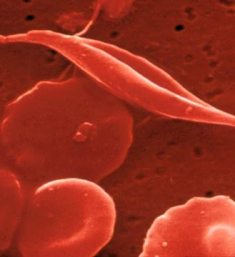Cayman observes Sickle Cell Disease Day
 (CNS): According to Public Health statistics, there are 41 people affected by sickle cell disease in the Cayman Islands. It is a chronic disease, which is managed by treating the symptoms and helping those afflicted to cope. Screening started locally in the early 1970s for high risk families. Since the 1980s all students are tested before starting school and in 1997 routine newborn screening began. “This has greatly helped in early identification of sickle cell trait and disease – which is important so people can access the appropriate counselling and treatment available,” said the genetics coordinator, Joy Merren, Sunday, as Cayman observed World Sickle Cell Disease Day (19 June) in an effort to raise awareness about the world’s most common genetic disorder.
(CNS): According to Public Health statistics, there are 41 people affected by sickle cell disease in the Cayman Islands. It is a chronic disease, which is managed by treating the symptoms and helping those afflicted to cope. Screening started locally in the early 1970s for high risk families. Since the 1980s all students are tested before starting school and in 1997 routine newborn screening began. “This has greatly helped in early identification of sickle cell trait and disease – which is important so people can access the appropriate counselling and treatment available,” said the genetics coordinator, Joy Merren, Sunday, as Cayman observed World Sickle Cell Disease Day (19 June) in an effort to raise awareness about the world’s most common genetic disorder.
“It is important to test for sickle cell trait – as this information can help parents make informed reproductive choices,” Merrson explained. “If someone has sickle cell trait, it is important to know if one’s partner is also a carrier. If both parents are sickle cell carriers, then with each pregnancy, there is a 25% risk of having a child with sickle cell disease. While sickle cell trait is mild, sickle cell disease is serious and can potentially affect every organ of the body.”
Cayman has a SickleCell Support Group that meets around three to four a year offering support to patients and families as they share experiences in coping with sickle cell disease. “Also included are educational presentations on awareness and management of the disease,” Merren added.
Sickle cell disease is an inherited chronic disorder that affects red blood cells. It has a worldwide distribution, and is one of the most common genetic disorders. Everyone has two genes that make haemoglobin. Normal red blood cells contain haemoglobin A, a protein that helps red blood cells carry oxygen around the body. With sickle cell there is a different form of protein, haemoglobin S. With sickle cell disease, both genes are affected, causing severe symptoms. Normal red blood cells are round, flat and very flexible. However, when the oxygen comes out of the red blood cells of sickle cell disease, the cell becomes stiff and takes on the shape of a sickle – hence, the name.
The sickle cells clump together, are not able to squeeze through the small blood vessels, and so the sickle cells get destroyed more quickly. A normal red blood cell lives approximately 120 days but a sickle cell may only live 11 or 12 days.
When only one gene is affected, it is called sickle cell trait, or persons are called sickle cell carriers. Having sickle cell trait means that the person stays healthy under normal circumstances, and the main significance is that it can be passed on to one’s children. However, under certain extreme circumstances, a person with the trait may experience complications as if having sickle cell disease. People who have just the trait cannot later develop the disease. A blood test can be done to determine if a person has the trait.
If a man and a woman are both sickle cell carriers, with each pregnancy, there is a 25% chance of the child having the disease, a 25% chance of the child being completely free from sickle cell and a 50% chance of the child having the sickle cell trait, i.e., being a carrier.
If only one parent is a carrier, then there is a 50% chance of the child having the trait and a 50% chance of the child being completely free of sickle and no chance of the child having the disease.
Sickle Cell causes anaemia, jaundice and gallstones due to rapid breakdown of the red blood cells as well as painful swelling of fingers and toes in babies and painful attacks of joints, back and abdomen as there may be damage to the bone marrow. Infections may develop, such as pneumonia and leg ulcers due to less oxygen to the lower legs.
The disease is managed through recommended immunizations plus pneumococcal vaccines, penicillin, starting from about 2 months of age to 5 years of age to help prevent serious infection and by using medications as needed. Folic acid also helps to make new red cells
The next meeting of the local sickle cell group is planned for Tuesday, 21 June 2011 at 7:30 p.m. in the Public Health Waiting Room at the Cayman Islands Health Services Authority and is open to the public. For further information, please contact Joy Merren on 244-2630 at the Public Health Department.
Category: Health

